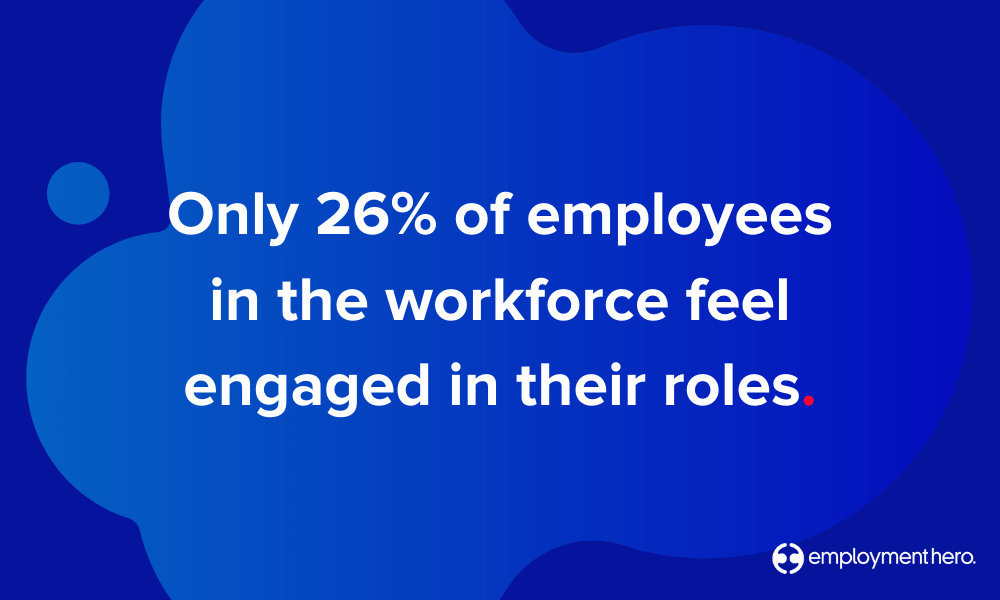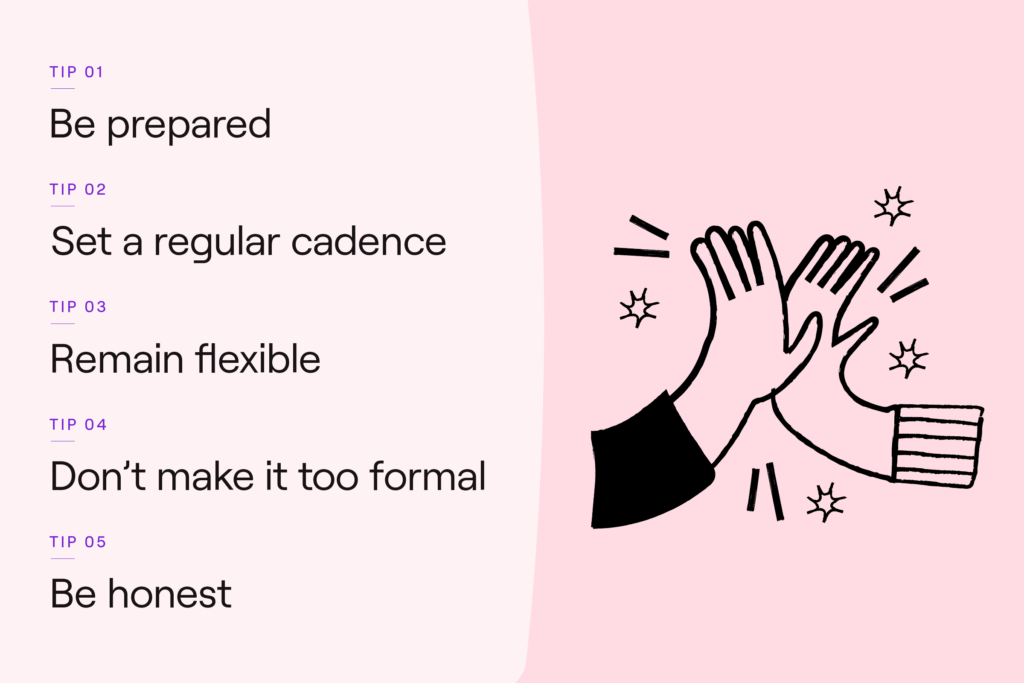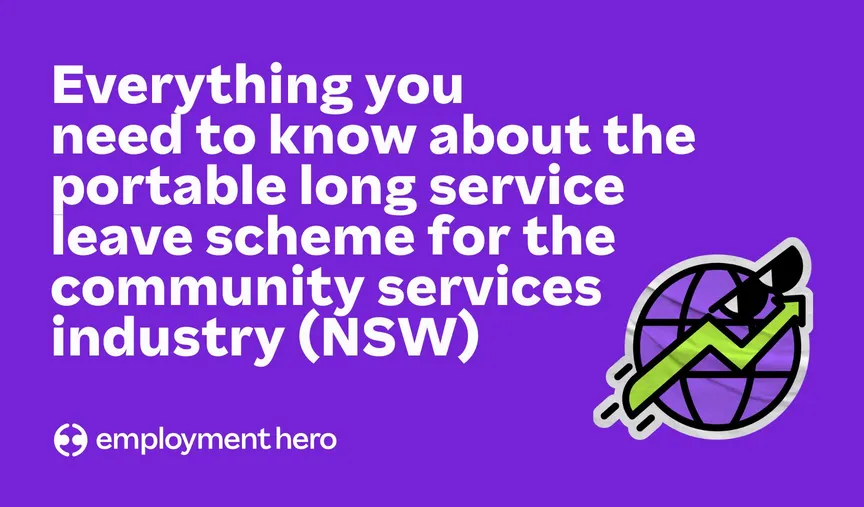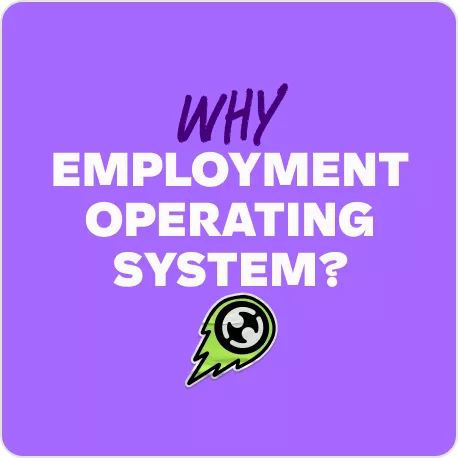What are 1:1s? One-on-one meetings explained
1:1s may seem like just another buzzword, but it’s so much more than that.

Contents
We often hear that internal communication is a pain point for businesses, so what if we told you that you could improve it with one simple yet effective management technique?
One-on-one meetings might be the very thing to take your company’s communication and alignment to the next level of performance.
1:1s. It may seem like just another buzzword, but it’s so much more than that. Buzzword or not, we’re calling it — implementing 1:1s can be the difference between building a good team and a great team.
Ongoing feedback is essential for employee development and allows team members to reach their full potential and climb the career ladder. Whether you’re a manager or early on in your career, ongoing communication is an important part of managing a team effectively.
We know that many of you can relate when we talk about internal communication challenges. How do we know? According to a recent study, 60% of companies don’t have a long-term strategy in place for their internal communication.
This means that there is no regular communication across the team, which could contribute to workplace silos.
Ready to dive in and get up to speed with 1:1s? Keep reading as we explain the concept of 1:1s and how you and your team can get the most out of them.
For a comprehensive guide on effectively implementing 1:1s, check out our HR Masterclass: How to implement effective 1:1s.
What is a one-on-one meeting (1:1s)?
1:1s are a scheduled weekly or fortnightly catch-up that an employee has with their direct manager. This is time dedicated for the employee to talk through how their past week or fortnight has gone, as well as commit to things for the future.
Although there’s still structure to 1:1s, it’s an informal way to catch up on the week that was. They empower accountability and trust and are a great way to discuss goals, engagement, career development and roadblocks.
Did you know? 1:1s have many different names. They can be referred to as:
- 1:1s
- 1-1’s
- 1 on 1’s
- 1:2:1s
- One-on-ones
- One-to-one meetings
- One-on-one meetings
For the sake of clarity, we will be using ‘1:1s’ and ‘one-on-one meetings’ within this article.
Why are one-on-one meetings important?
1:1s can strengthen the relationship between managers and employees, reduce turnover and facilitates more productive conversations at work.
For 1:1s to be as effective as possible, they should adhere to three key things:
- Scheduled
- Recurring
- Structured
Not only do 1:1s serve as a way to strengthen bonds, but they also contribute to improved communication and trust within the business, a great benefit for any workplace.
By having a transparent relationship with your direct reports, you’ll be able to understand how they’re feeling. This could be whether they’re feeling frustrated or anxious about an upcoming project and need some assistance. Alternatively, feeling happy, inspired and extremely engaged in their work.
This is important for managers in order for them to manage their direct reports effectively. How do you manage someone you aren’t regularly checking in with?
Put yourself in the shoes of your direct report
Imagine this – Your direct report is completing great work, so you assume they’re loving their role.
However, one month later they resign from their role, and you feel blindsided and confused.
You assumed that they were working long hours because they loved what they were doing, however, this was not the case. In the exit interview, they revealed that they were feeling extremely burnt out and underappreciated in their role, so when the opportunity came about to jump ship, they did.
We’ve all seen this scenario time and time again, and it’s something that we believe can be avoided with better communication.
If you knew that your direct report was feeling underappreciated, you could have taken the appropriate action to discuss challenges, as well as reward and recognise their efforts.
If you know that they were feeling burnt out, you could have reduced their workload, expanded the team or encouraged them to take leave.
At the end of the day, poor communication can be detrimental to business success. To decrease your risk of losing top talent, we suggest that you implement 1:1s pronto!
What are the benefits of one-on-one meetings?
Do you remember the last time you caught up with your direct report to discuss how they’re going? If it was more than a fortnight ago, you’re missing out on all the benefits associated with having regular 1:1s.
Here are some benefits of setting regular meetings with your team members.
1. Improves communication
We all know that frequent communication is the key to building a high-performing team. When your team is open and honest about their work and current roadblocks, engagement and output naturally improve tenfold.
There’s no denying that these days, we’re busier than ever. Sometimes it can be easy to get caught up in work and deadlines, and that means that regular meetings and communication slip off the agenda.
One of the benefits of having 1:1s is that you have dedicated time each week to go through how your direct reports are feeling. It’s also a great opportunity to discuss any challenges they’re facing either personally or professionally. To delve deeper into motivating your team, read our guide on how to inspire a team at work as a leader.
Read more: How to delegate tasks effectively
2. Boost employee engagement
If you’re finding your team isn’t as engaged as they once were, 1:1s could be just the thing you need to ignite their excitement for work again. With approximately only 26% of the workforce engaged in their roles, pencilling in some time each week to boost engagement seems like a no-brainer!

When you schedule regular 1:1s, your team is more likely to feel engaged with the work they’re doing and the company as a whole. Regular 1:1s ensure that your direct reports feel heard and valued in their role and by adding structure to your meetings, you can achieve just that.
By having discussion points and questions for your direct report to answer, you can identify their roadblocks and provide practical solutions to help them meet their targets and goals.
The result? High-performing, motivated and engaged teams that are always willing to go above and beyond… Sounds like a dream, right?!

3. Improves productivity
When you look at 1:1s from a holistic perspective, they’re designed to help your team members be their best. Whether you use 1:1s to talk through how your direct reports week has been or simply set goals for the week ahead, the ball is in your court when it comes to deciding what works best for your management style.
At the end of the day, 1:1’s, allow you to reflect on the past week and discuss what did and didn’t work well. Having this session of constructive feedback allows you to set expectations and get the team on the same page.
Remember, your role as a manager is to provide guidance and act as a source of inspiration to your direct report so they will feel empowered to be productive.
Top tip: During your 1:1s, write a to-do list of tasks you want to achieve in the next week and then review them in your next session. It’s a great way to stay motivated, especially in busy times.
Read more: Creating mentorship programs for your team
4. Builds trust and improves professional relationships
When you regularly catch up with your direct report, they should feel a stronger sense of trust with you. This allows for transparent conversations to be had and realistic steps put in place to overcome challenges. Don’t forget that managers are role models for their direct reports so the more trust, the better!
Without regular 1:1s in place, your direct report might feel as though they can’t talk to you about issues they’re facing and this is the last thing you want. You may never understand the challenges or roadblocks they’re experiencing because they feel as though they’ll be judged.
In the workplace, trust is everything. Low trust can be detrimental to company culture and ultimately lead to high staff turnover, and no one wants that.
Read more: Dealing with bad managers in your team
5. Allows for career development discussion
Career growth and development are critical for keeping your employee engagement high. However, a recent study found that only 29% of employees are ‘very satisfied’ with their current advancement opportunities in their workplace.
Traditionally, career development and progression opportunities were only brought up once a year at annual review time. This can be incredibly frustrating for a direct report — especially if they’re waiting an entire year to have career conversations and discuss their next steps.
The result of not talking about career development? They’ll walk out the door and straight to a competitor who values professional development opportunities. Small things like discussing where they’d like to be in six months can make all of the difference.
You can start this discussion by asking questions about skills they’d like to improve on and what their dream position would be. From here, you can put a clear action plan in place so they can actively work towards their career goals. Remember, by encouraging your direct report to regularly think about their career goals, they’ll be more motivated to achieve them.
Read more: Benefits of having an online appraisal system
6. Allows for goals to be proactively set and monitored
Having professional goals in place can help guide your direct report through their career. Remember, one of the benefits of 1:1s is the ability to check on progress regularly.
Time and time again you’ll see employees swimming through their roles with no clear direction or career drive. This can often come down to a lack of direction or having goals that aren’t clearly defined.
This can lead to disengaged employees who are left feeling uninspired in their roles. This is not a great place to be as it can often do more damage to the company than good.
Read more: How implementing OKRs can supercharge goal setting
How do you run an effective 1:1?
To run an effective 1:1, it requires preparation. If you prepare a few questions prior to the meeting, it can help guide your discussion and result in an effective outcome. Sounds good, right?
To help you get the most out of your 1:1s, we’ve rounded up our top tips.

Be prepared
Preparation is key when it comes to an effective and productive 1:1. Start by thinking about a few questions your direct report will find useful so you can help them achieve their goals.
Are you looking for status reports? Looking to share feedback? Or simply want to have a free-form meeting to catch up on their personal life?
By setting a meeting agenda, you’ll be able to support your employee and ultimately be more collaborative.
Set a regular cadence
Whether you choose weekly or bi-weekly meetings, having your 1:1s on as a recurring calendar event means they won’t suddenly disappear from your agenda.
Even when times are busy and you have to reschedule your 1:1s, make sure you move them to a different time or day. You don’t want to fall into the routine of continually saying “Sorry, can we reschedule our 1:1?” and they never actually happen.
However, if things are going well and you’re both happy to miss the occasional 1:1, that’s a-ok, too — just make sure to reschedule!
Remain flexible
Although you should have a meeting structure set with talking points planned for each week, it’s important to remain flexible on the meeting structure. If the 1:1 focuses specifically on one roadblock someone is facing in their day-to-day work, and you find a solution, that’s still a great outcome.
Sometimes your 1:1s will be 10 minutes (especially if set regular meetings with your direct report), sometimes they’ll be an hour. There’s no right or wrong way when it comes to 1:1s — it can be a process of trial and error and finding out what works best for both of you.
Don’t make it too formal
The last thing you want to do is make your 1:1s a formal, robust process where your team member feels like they can’t have a personal conversation about how they’re feeling.
If some weeks you only focus on one issue, that’s still considered a productive 1:1. They’re designed to increase trust and communication within teams so you can help them both in achieving their professional goals as well as in personal development.
REMEMBER: 1:1s are a casual way to share feedback, progress and discuss challenges with your direct reports — they aren’t annual performance reviews.
Be honest
At the end of the day, honesty is key. When you are open, transparent and honest with your team members, you create psychological safety within the team and instil confidence for your team members to openly discuss challenges. You’ll be happier and in a better position to achieve your best work.
DID YOU KNOW: Employment Hero has a built-in 1:1 feature that can help you manage your team effectively? 1:1s in Employment Hero will guide managers and employees through structured and regular meetings with the goal of providing an environment for coaching and constructive feedback.
If you’d like to learn more about 1:1s in Employment Hero, get in touch with one of our small business specialists who will walk you through a demonstration. Alternatively, you can watch the quick demo below.
https://www.youtube.com/watch?v=jO5OaecotSo
What questions should you ask in a 1:1?
It’s important to have a list of questions ready for your 1:1. If possible, ask your team members to fill them out prior to your next meeting so that you can both come prepared. This will ensure that you stay on track and get the most out of your 1:1.
Some examples of questions you could in your 1:1 ask include:
- Rate your happiness on a scale of 1 to 10
- What are you proud of in the last week?
- What are your roadblocks right now?
- How are you progressing with your long-term goals? Have you made any progress this week?
- Are there any skills you would like to improve?
- How can I help you achieve your goals better?
- What are you committing to next week to progress your goals?
Check-in with direct reports regularly
Sometimes it can be easy to underestimate the importance of regular catch-ups with your team.
At the end of the day, 1:1s is an important ingredient of every high-performing team. By being prepared, setting a regular cadence, remaining flexible and being honest, you’ll be on your way to getting the most out of your team. Not only this, but you’ll also begin to reap the benefits associated with regularly communicating with your team.
Ultimately, 1:1’s can improve communication, build trust, improve productivity and allow for career development conversations. By introducing 1:1’s into your workplace, you’ll be able to experience all the benefits associated with them. So go on, get started!
Related Resources
-
 Read more: NSW Government introduces Portable Long Service Scheme for the Community Services Industry
Read more: NSW Government introduces Portable Long Service Scheme for the Community Services IndustryNSW Government introduces Portable Long Service Scheme for the Community Services Industry
The NSW Government has introduced portable long service leave for the community services industry. Learn what it is and what…
-
 Read more: Payday Super changes: What we’re fighting to fix and why it matters to you
Read more: Payday Super changes: What we’re fighting to fix and why it matters to youPayday Super changes: What we’re fighting to fix and why it matters to you
Big changes are coming to how superannuation is paid in Australia. Here’s what we’re asking Treasury to seriously consider updating…
-
 Read more: Why choice in superannuation matters
Read more: Why choice in superannuation mattersWhy choice in superannuation matters
What could be coming when Payday Super hits and what Employment Hero is doing about it.











